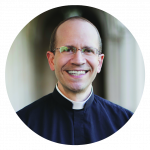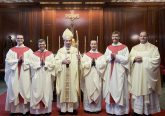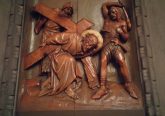Question of Faith: Where Does The Church Stand On Homosexuality?
Does the Church believe homosexuality is a choice?
Your question is a complex one, straddling science, moral theology and pastoral practice. In discussing the origins of homosexuality, it is important to understand the Church’s vision of the person and human sexuality. This is particularly crucial since the Church’s teaching regarding homosexuality is not well understood. Even the terminology that the Church uses, because it is not consistent with society’s view of homosexuality, has prevented many from understanding this teaching.
IDENTITY AND DIGNITY
Every person is made in the image and likeness of God. Each person has a fundamental dignity as a son or daughter of God. Using labels such as heterosexual, homosexual or bisexual can obscure this reality, making one’s sexuality appear as a primary or even exclusive identifier. The Church seeks to avoid reducing persons to their sexual orientation. Considering sexual inclination as an aspect of one’s life, the Church prefers not to refer to anyone by the terms gay or homosexual, but instead, as a person with same-sex attraction or homosexual inclinations.
Those who experience same-sex attraction do not in any way forfeit their human dignity. They should be treated with respect and love, and those who are Christian, as fellow brothers and sisters in faith and co-heirs to the life of heaven. Any forms of violence or unjust discrimination are not consistent with the example of Christ.
SCIENCE AND ORIGIN
Science continues to weigh in on the origin of same-sex attraction, including studies of a potential genetic basis. A consensus seems to be forming that there is no single biological or genetic origin. Consistent with the developing scientific consensus, the Catechism of the Catholic Church notes, “[Homosexuality’s] genesis remains largely unexplained” (CCC, 2357).
Though, for some, same-sex attraction may be experienced in a transitory way, others experience it throughout their lives, which may be due to an “innate instinct” or condition (“Persona Humana: Declaration on Certain Questions Concerning Sexual Ethics,” 8).
The first edition of the Catechism of the Catholic Church (published in 1994) contained a paragraph that read: “[Persons with same-sex attraction] do not choose their homosexual condition; for most of them it is a trial” (CCC, 2358). However, the catechism’s second edition (from 2000) omitted the reference to choosing homosexuality to be more consistent with the scientific uncertainty of the causes of same- sex attraction.
FREEDOM AND VIRTUE
If same-sex attraction were determined to have a purely biological or genetic cause, it would not alter the Church’s understanding of human sexuality. Since sexual activity of either orientation outside of marriage is not ordered to the Christian’s flourishing, the Church teaches that God calls all persons, including those with same-sex attraction, to live the virtue of chastity.
The Church reminds us that it is actions, not inclinations, that are sinful and that human persons possess agency over their actions. Each person is called to cultivate a life of virtue and achieve greater freedom through discipline. For this reason, we must avoid “the unfounded and demeaning assumption that the sexual behavior of homosexual persons is always and totally compulsive” (On the Pastoral Care of Homosexual Persons, 11).
Since neither the Church nor science fully knows the causes of same-sex attraction, the Church does not take a position on its origins. Instead, it emphasizes each person’s dignity and the call to chastity. For a person is not primarily heterosexual or homosexual but a son or daughter of God, and, through His grace, an heir to the life of heaven.
 Father David Endres is associate professor of Church history and historical theology at Mount St. Mary’s Seminary & School of Theology.
Father David Endres is associate professor of Church history and historical theology at Mount St. Mary’s Seminary & School of Theology.
This article appeared in the September edition of The Catholic Telegraph Magazine. For your complimentary subscription, click here.













